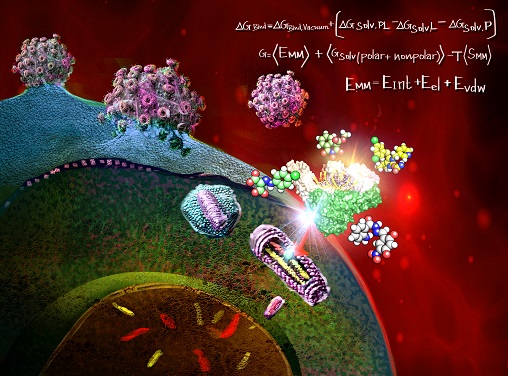Researchers turn supercomputers into powerful allies in the fight against AIDS

The battle against AIDS cannot be won in the laboratory alone. To fight the potentially deadly virus that 34 million people are suffering from we need help from supercomputers. Now research fron University of Southern Denmark turns supercomputers into powerful allies in the battle.
Effective treatment of HIV-virus is a race against time: Many of the drugs that have been potent killers of HIV-virus, have today lost their power, because the virus has become resistant to them. As a result science must constantly develop new drugs that can attack the virus in new ways.
Now researchers from the University of Southern Denmark present a method to speed up the important development work up with an order of several hundred percent.
It now takes not years, but months or even only weeks to find new compounds that have the potential to become a new HIV drug. Finding suitable compounds that can specifically inhibit the HIV virus, is crucial in AIDS research, explains postdoc Vasantanathan Poongavanam from Department of Physics, Chemistry and Pharmacy, University of Southern Denmark:
"HIV is a retrovirus that contains enzymes which make it able to copy itself with the help of host genetic material and thus reproduce. If you can block these enzymes’ ability to replicate itself, the virus cannot reproduce."
The needle in the haystack
An almost infinite number of different substances can be synthetized in a laboratory. Some of them may prove to inhibit HIV-virus’s reproduction, but finding them is like finding a needle in a haystack.
"It takes enormous amounts of time and resources, to go through millions and millions of compounds. With the techniques used today, it may take years to carry out a screening of possible compounds”.
In addition, it takes time to turn an effective compound into a safe pharmaceutical agent that can get on the market.
"Today, it generally takes nearly 14 years from the time you find a drug candidate to get it on the market. Anything that can shorten that time is an important improvement”, says Vasanthanathan Poongavanam.
Until now, researchers have been hampered by slow computers and inaccurate prediction models when they ask computers to identify compounds that may be effective against HIV. Now the SDU researchers have managed to develop an effective model at a time when significantly more powerful computers have become available.
“Our work shows that computer based predictions are a extremely fast, accurate and promising methodology in the drug discovery projects”, says Vasanthanathan Poongavanam.
14 new compounds found
With the new methods based on quantum mechanics and molecular mechanics, Vasanthanathan Poongavanam and his colleague, Jacob Kongsted, screened half a million compounds and found 25 that were interesting to investigate further. These 25 were tested in a conventional laboratory experiment, and 14 of them were found to inhibit HIV virus's ability to reproduce.
"It took us only a few weeks to find these 14 very interesting compounds, whereas before it would have taken years", explains Vasanthanathan Poongavanam.
The 14 compounds have now been taken over by Italian researchers who continue working with them at the University of Cagliari. The next step is to carry out advanced experiments on these compounds. If they are positive, the compounds may go on the market as a drug against HIV.
Illustration HIV virus (big purple balls) are entering a host cell. Once they have entered, they deliver their cargo of viral RNA (purple capsule looking container). The container also carries enzymes needed for the virus to copy itself, and the goal is to inhibit these enzymes so that the virus no longer can copy itself.
The description of the new method are published in the journals Integrative Biology and Plos One.
